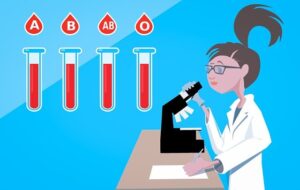Sweden: New breakthrough in the early screening of prostate cancer
- Gut Bacteria Enzymes Offer Hope for ABO Universal Blood Transfusions
- Well-Known Japanese Medicine Exposed for 30 Years of Data Falsification
- Oregon Reverses Course: From Decriminalization to Recriminalization of Drug Possession
- Why Lecanemab’s Adoption Faces an Uphill Battle in US?
- Yogurt and High LDL Cholesterol: Can You Still Enjoy It?
- WHO Releases Global Influenza Vaccine Market Study in 2024
Sweden: New breakthrough in the early screening of prostate cancer
Sweden: New breakthrough in the early screening of prostate cancer. Subvert the traditional detection method and achieve a new breakthrough in the early screening of prostate cancer.
“High rate of overdiagnosis” is a key obstacle to prostate cancer screening. Recently, a new study has finally determined an effective and safe screening method for prostate cancer-risk prediction + MRI + targeted biopsy.
Researchers from Karolinska Institute in Sweden recently reported that magnetic resonance imaging (MRI) can reduce overdiagnosis and improve prostate cancer screening. Now, the same research team has published a new study that shows that adding a new blood test, Stockholm3, can reduce the number of MRIs by one-third, while further preventing the detection of small, low-risk tumors. .
Prostate cancer refers to an epithelial malignant tumor that occurs in the prostate. In 2012, the incidence of prostate cancer in some countries’s tumor registration areas was 9.92 per 100,000, ranking sixth in the incidence of male malignant tumors. The age of onset is at a low level before 55 years of age, and gradually increases after 55 years of age. The incidence rate increases with age, and the peak age is 70 to 80 years. The age of onset of familial prostate cancer is earlier, and 43% of patients are younger than 55 years old.
Tobias Nordström, Associate Professor of Urology at the Department of Clinical Sciences at the Danderyd Hospital of Karolinska Institutet, said: “Overall, our research shows that we have identified the tools needed to screen for prostate cancer effectively and safely. Years of controversy and research, it feels great to be able to show the knowledge that can improve male health care.” He is in charge of the STHLM3MRI research.
The current screening method-PSA (Prostate Specific Antigen) test combined with traditional biopsy, leads to unnecessary biopsy and the detection of many small, low-risk tumors (overdiagnosis). Therefore, with the exception of Lithuania, no country has chosen to implement a nationwide prostate cancer screening program because the harms outweigh the advantages.
On July 9, 2021, the results of the STHLM3MRI study were published in The New England Journal of Medicine, showing that using magnetic resonance imaging (MRI) and targeted biopsy instead of traditional prostate biopsy can reduce overdiagnosis.
The results of this new study are based on “Prostate cancer screening using a combination of risk-prediction, MRI, and targeted prostate biopsies (STHLM3-MRI): a prospective, population-based, randomised, open-label, non-inferiority trial” The research on the subject has been published in “The Lancet Oncology”, and the results show that Stockholm3, developed by researchers from Karolinska Institutet, can be an important supplement.
It is a blood test that uses an algorithm to analyze a combination of protein markers, genetic markers, and clinical data.

“The availability of MRI in healthcare will be a limiting factor. We now show that a new blood test as an adjunct to MRI can reduce the number of MRI examinations by one third. Compared with traditional screening, overdiagnosis The rate is reduced by 69%.
At the same time, the number of biopsies has been reduced by half, and we can find the same number of clinically significant tumors. “Said Martin Eklund, associate professor of the Department of Medical Epidemiology and Biostatistics at the Karolinska Institute, who is also the co-leader of the STHLM3MRI research.
STHLM3MRI is a prospective, population-based, randomized, open, non-inferiority experiment. The Swedish Statistics Bureau randomly selects men aged 50-74 and invites them to participate in the screening via email; patients with an increased risk of prostate cancer are defined as patients with a PSA of 3 ng/mL or higher, or a Stockholm3 score of 0.11 or higher Meet the conditions of random grouping.
Exclude men who had been previously diagnosed with prostate cancer, had undergone a prostate biopsy within 60 days before being invited to participate, had contraindications to MRI, or had serious illnesses. Eligible participants were randomly assigned (2:3), using computer-generated 5 blocks, stratified according to clinically significant prostate cancer risk, and received systematic prostate biopsy (standard group) or dual-parameter MRI, and then MRI-positive participants (Experimental group) underwent MRI targeting and systematic biopsy. The main result is the detection of clinically significant prostate cancer in a prostate biopsy, defined as a Gleason score of 3 + 4 or higher.
We use a marginal value of 0.78 to assess the non-inferiority of the main results. Key secondary indicators include the proportion of men with no clinically significant prostate cancer (defined as a Gleason score of 3 + 3), and the number of any prostate MRI and biopsy procedures. We made two comparisons: Stockholm3 (using 0.11 and 0.15 points as cut-off values) and PSA of the experimental group (paired analysis) and PSA plus standard biopsy and Stockholm3 plus MRI targeting and systematic biopsy (unpaired, random analysis). All analyses are intention-to-treat.
From February 5, 2018 to March 4, 2020, a total of 49,118 men were invited to participate, of which 12,750 participated and provided blood samples. 2293 high-risk groups were randomly assigned to the experimental group (n=1372) and the standard group (n =921).
For Stockholm3 and PSA, the area under the receiver operating characteristic curve for clinically significant prostate cancer is 0.76 (95% CI 0.72-0.80), and PSA is 0.60 (0.54-0.65).
In the experimental group, Stockholm3 of 0.11 or higher was not lower than 3 ng/mL in the detection of clinically significant prostate cancer, or higher PSA (227 vs 192; relative ratio [RP] 1.18 [95% CI 1.09- 1.28], non-inferiority p<0.0001), a similar number of low-grade prostate cancers were also detected (50 vs 41; 1.22[0.96-1.55], p=0.053 as an advantage), and compared with more MRI and Biopsy related. Compared with PSA with a PSA of 3 ng/mL or higher, Stockholm3 of 0.15 or higher has the same sensitivity for detecting clinically significant cancers and results in fewer MRI examinations (545 vs 846; 0.64 [0.55- 0.82]) and fewer biopsies (311 vs. 338; 0.92 (0.86-1.03).
Compared with PSA and systematic biopsy screening, a Stockholm3 of 0.11 or higher combined with MRI targeting and systematic biopsy is associated with higher clinically important cancer detection (227 [3%] male testing vs 106 [2.1%] male testing; RP 1.44 [95% CI 1.15-1.81]), the detection rate of low-grade cancers is lower (50 [0.7%] vs 73 [1.4%]; 0.46 [0.32-0.66]), and leads to fewer biopsy procedures. Patients randomly assigned to the experimental group had a lower incidence of infection with antibiotic prescriptions (25 out of 1372 patients [1.8%], 41 out of 921 patients [4.4%]; p=0.0002), and a lower hospitalization rate ( 16[1.2%] is compared to 31[3.4%]; p=0.0003).
All in all, in prostate cancer screening, the Stockholm3 test can further risk stratification of patients before MRI and targeted biopsy. The use of Stockholm3 detection combined with MRI targeted biopsy for prostate cancer screening can ensure the detection rate while reducing over-examination.


Tobias Nordström concludes: “The Stockholm3 test and MRI alone have proven cost-effective before. We have now analyzed the cost-effectiveness of combining these tools and will report the exciting results of this analysis soon.
“Using prostate-specific antigen (PSA) to screen for prostate cancer can reduce prostate cancer mortality, but it may lead to adverse consequences. The purpose of this study is to combine traditional screening methods with blood-based risk prediction and MRI-targeted biopsy. Comparison of diagnostic strategies.
This research was funded by the Swedish Cancer Society, the Swedish Research Council, the Swedish Health Research Council, the Working Life and Welfare Research Council, the Karolinska Institute, Hagstrandska Minnesfonden, the Stockholm Region, the Swedish Druid Church, and the Åke Wiberg Foundation. , Swedish Electronic Science Research Center (SeRC) and Prostate Cancer Association.
Early verification is funded by EIT Health. Henrik Grönberg, Martin Eklund and Tobias Nordström are partners of A3P Biomedical AB, which owns the right to develop the Stockholm3 test.
(source:internet, reference only)
Disclaimer of medicaltrend.org
Important Note: The information provided is for informational purposes only and should not be considered as medical advice.



